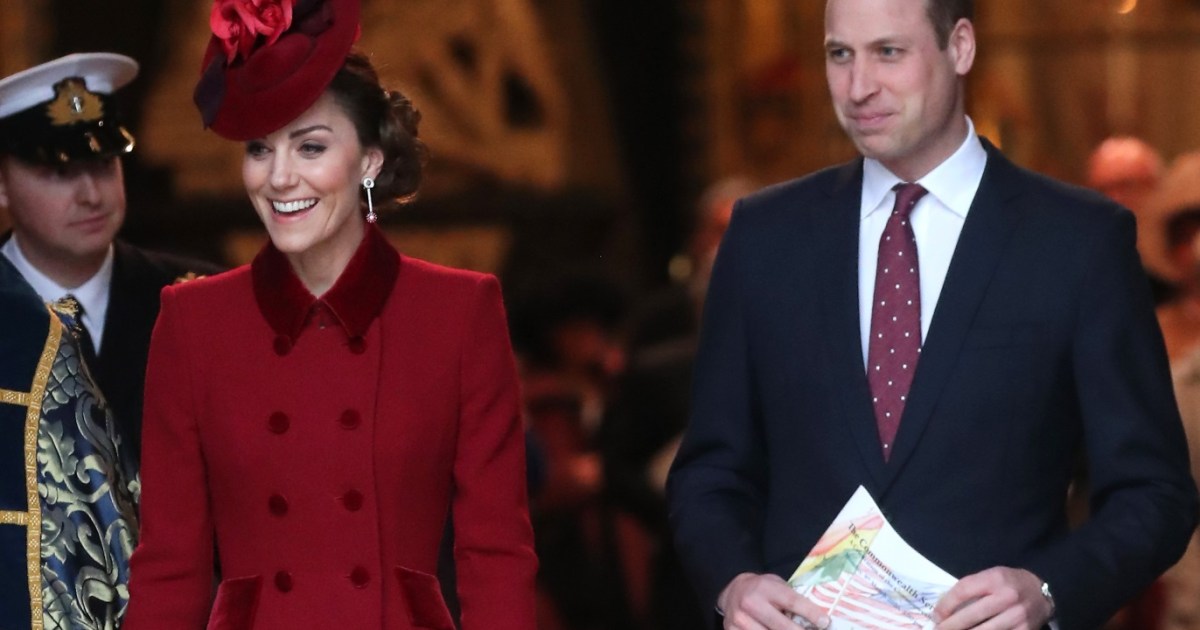The Duke and Duchess of Cambridge's Caribbean tour marking the platinum jubilee of Queen Elizabeth II has come under fire for the royals' historical association with colonialism and slavery.
"We see no reason to celebrate 70 years of your grandmother's accession to the British throne because her leadership and the leadership of her ancestors ushered in the greatest human rights tragedy in human history," said an open letter from Jamaican public figures.
The British Empire has always been described as the one on which the sun never sets. Its influence included many countries, most notably India and the regions of Greater Africa, North and South Africa, and also expanded beyond the seas in Asia and the Americas.
But what does the British monarchy have to do with slavery and colonialism?
How did it benefit from these exploitation and confiscation regimes?
An article published on The Conversation by academic Laura Clancy at Lancaster University attempts to answer these questions.
1 - Financing slavery trips
The British monarchy was pivotal to the establishment, expansion and maintenance of the British Empire and the transatlantic slave trade.
The English Empire was first proclaimed King Henry VIII in 1532, Queen Elizabeth I (1533-1603) granted a royal charter to Sir John Hawkins, widely considered one of the first English traders to profit from the slave trade, and a charter to the British East India Company in 1600 .
After Elizabeth's death, Charles II founded the Royal African Company, in 1660, led by the Duke of York (later James II), which extracted commodities such as gold and ivory from the Gold Coast in eastern Australia, and transported more than 3,000 Africans to Barbados. Many of these were ironed with the letters "DY" to denote their affiliation with the Duke of York, and the two men invested private money in the company.
Queen Victoria became Empress of India in 1877, and by 1920 the empire spanned an area of 13.71 million square miles.
The global importance and power of the British monarchy arose directly from the enslavement of people of color.
2 - Commonwealth
The Commonwealth is an organization of 52 "independent and equal" member states. Despite this claim of "independence" the Commonwealth has imperial origins as many of the organization's member states are former colonies of the British Empire.
Commonwealth expert Philip Murphy describes the way the empire was transformed into an organization as "random".
The Queen is Head of the Commonwealth and Prince Charles was appointed as her successor in 2018, but the position is not hereditary and there is no constitutional or legal reason for Charles to assume the role.
The role of Head of the Commonwealth allows the King to continue the role of privilege and international influence that stems from colonial history.
3 - The Queen is the head of the state
The London Declaration in 1949 defining India’s position in the Commonwealth as a republic set a precedent for the organization’s countries to adopt a republic, but today still 15 constitutional monarchies with Elizabeth II as head of state, including islands in the Caribbean such as Jamaica and countries in South America such as Belize and African countries such as Ghana, Canada and Australia.
Since 1842 each country has appointed a local governor-general to be the queen's representative with the power to propose legislation, approve or refuse to substantiate bills and dissolve Parliament, and although the Queen has no "direct" political control in these areas, the power of the governors-general can be interpreted as symbolizing the authority of Continuous ownership management.
4 - Property, land and merchandise
Following the National Trust's report on the history of slavery and colonialism in its holdings and property in England, Wales and Northern Ireland, the Chief Curator of Historic Royal Palaces, Lucy Worsley, has announced a similar investigation into the royal palaces in 2020.
Worsley said all 17th-century possessions used by the Stuart dynasty "would have an element of money associated with slavery", including Kensington Palace and Hampton Court Palace, which have links to King William III, another part-owner of the Royal African Company.
As well as goods now owned by the royals that were stolen during colonialism, such as the Koh-i-Noor diamonds from India that were used in the crown jewels and which both Pakistan and India repeatedly demanded to be returned.
5 - "Our Great Imperial Family"
In a 1947 speech in South Africa, then-Princess Elizabeth announced that she would dedicate her life "to the service of our great imperial family to which we all belong".
The concept of the "imperial family" reflects the idea of the British monarchy as a symbol of an empire imbued with ideologies of white supremacy and colonialism.
This idea also plays a role in international royal visits, and these visits have had colonial dimensions throughout history by portraying the king as the "white saviour".
Media researcher Raka Shumi explains how Princess Diana, for example, became emblematic in her pictures playing with and caring for black children in Africa, something we can see repeated again this week in pictures of the Duke and Duchess of Cambridge extending their hands to shake hands with Jamaicans from behind a wire fence .
In her view, such visits attempt to rewrite colonial and imperial history through rhetoric of philanthropy and the global community, with members of the royal family considered the "head" of the global family, which is at its core a good public relations campaign for the British monarchy.

